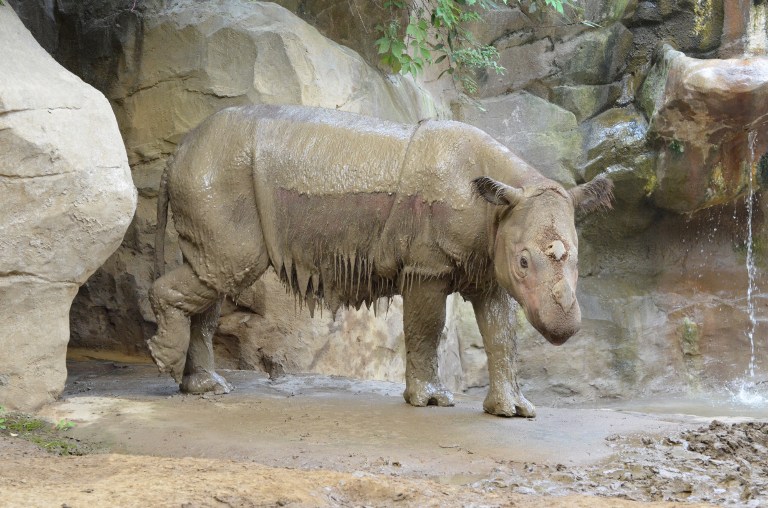KOTA KINABALU, Dec 7 ― Thought extinct in Malaysia, the recent discovery of footprints believed to be that of the Sumatran rhinoceros have revived speculation that the animal may still be roaming the rainforests here.
According to WWF Sabah Terrestrial Conservation Programme manager Sharon Koh Pei Hui, her survey team spotted a 23-cm wide footprint in Sabah’s Danum Valley Conservation Area between August 16 and 29, The Borneo Post reported today.
At first, the survey team thought the footprint belonged to that of a baby elephant but there was no evidence of elephants anywhere nearby which led to hopes that it belonged to a rhino.
The Sumatran Rhino is largely believed to be extinct in Malaysia, with a small population left in Indonesia.
“There was no signs of an accompanying mother elephant or elephant dung anywhere. Taking all these into consideration, it strengthens our hope that this could be the footprint of a rhino.
“But we did not see the animal itself so we cannot confirm it,” Koh told a media briefing here yesterday.
Her team of 10 people carried out the survey in Danum Valley as part of Yayasan Sabah’s efforts to acquire information into the wildlife biodiversity in the conservation area.
The team planned to return to the area last month with experts from the Borneo Rhino Alliance, Sabah Wildlife Department and Forestry Department but was hampered by bad weather and their pilot’s bad health.
Noting that the footprint was found within the conservation area but outside a “safe zone”, Koh said there were signs of human encroachment and possibly poachers, which was an added concern.
“The Forestry Department has been doing a good job with enforcement and patrolling regularly but meantime, we hope the rhino has moved up into higher ridges of the forest,” she said.
Last year, conservation scientists had declared that the Sumatran rhinos were extinct from Malaysian jungles with only three rhinoceroses being held in captivity in Sabah and none having been spotted in the wild since 2011.
The last one spotted in peninsular Malaysia was in 2007.
Known as solitary animals, these critically endangered animals have to find their way in the increasingly fragmented Borneo forests to find a mate in order to breed.
All the three rhinoceroses in captivity at the Borneo Rhino Sanctuary have problems in their reproductive systems and are unable to breed even with the help of scientists.



















